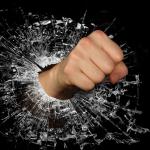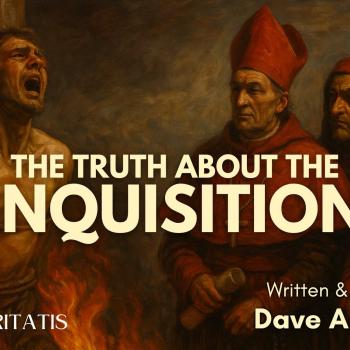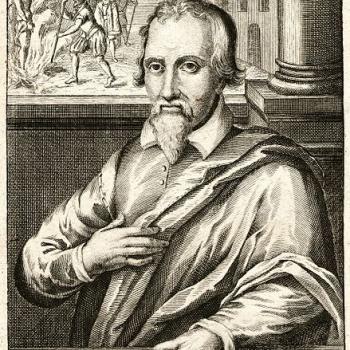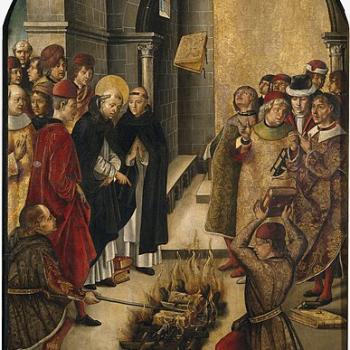
First of all, before I cite Church documents, I’d like to clarify as to what is meant and (especially) not meant by every respectable Catholic commentator I have seen who has noted that homosexuality is a statistically significant factor in the current sexual abuse scandals that are wreaking havoc in the Church.
In our day and age everything is so polarized, and people so often jump to wrong conclusions about what someone is even maintaining in the first place, that a significant amount of clarification and reiteration is necessary. Charges of alleged “bigotry” and “hate” are thrown out so casually that they have almost become synonymous with “anyone I disagree with.”
In the past we sadly saw in the Church all the whoring around and fathering of children by priests in the Renaissance / “Borgia” period, which was because we had so many heterosexual playboy / skirt-chasing / womanizing priests. It doesn’t follow that there is some sinister implication in this statement that all heterosexual priests are suspect simply by being heterosexual. It’s absurd.
Likewise, it doesn’t follow that all homosexually-oriented priests are suspect or suspicious simply by being homosexual. It’s absurd. They are simply the class among whom the sins we are now seeing, predominantly come. It’s a sociological observation, and there is objective evidence for it. The following two statements are altogether logically distinct (i.e., they say very different things):
1) All homosexuals commit sexual abuse (or they do so at far greater rates than heterosexuals); or: all sexual abuse is a homosexual phenomenon.
2) The majority of the sexual abuse in the Catholic Church has come from those who are homosexual.
The first statement is false, and outrageously so. It’s the extreme language of hatred and prejudice and “homophobia.” The second is the conclusion from the relevant statistical data.
The John Jay Report from 2004 noted that 81% of the victims of abuse were male. Nor was the abuse all properly classified as pedophilia (“a psychiatric disorder in which an adult or older adolescent experiences a primary or exclusive sexual attraction to prepubescent children”). Of all the male victims, 22% were younger than age 10, 51% were between the ages of 11 and 14, and 27% were between the ages of 15 and 17 years. Thus, a lot of the abuse is technically classified as ephebophilia: in which the primary sexual interest is in mid-to-late adolescents, generally ages 15 to 19.
In the recent Grand Jury Report of Pennsylvania Predator Priest Activity, three-quarters of the cases involved male-male activity, and only 11% of those were child victims. 60% were male teenagers and 2% male adult victims. The figure for male adult victims does not take into account consensual sexual relationships with adult males.
The way to end this outrageous mess is to get rid of any priest who sexually abuses anyone. If the ratio is 50.0001% heterosexual predators to 49.9999% homosexual, great. I couldn’t care less what the ratio is. I want to see all these priests defrocked and excommunicated and sent to jail if criminal charges apply. And any bishop who harbored these predators should be treated the same way. My view is “ultra-zero tolerance”: as I have made clear in an earlier article.
That said, it is a fact that active homosexuality clearly plays a disproportionate role, and is a major causal factor in the current scandal. Msgr. Charles Pope wrote, accordingly, in his article, “Active Homosexuality in the Priesthood Helped Cause This Crisis” (National Catholic Register, 8-18-18):
We should be clear that most people with same sex attraction do not commit sexual crimes or seek to seduce or sexually abuse younger men. Many people with same-sex attraction do live chastely and follow the teachings of the Church. This is not a sweeping characterization of all people with same-sex attraction.
But the statistical evidence of the recent scandals shows a highly disproportionate level of homosexual involvement. The numbers are well-demonstrated in both experience and in the John Jay Report. . . .
An honest discussion of the recent crisis needs to include a clear setting forth and analysis of these facts. Ignoring them and staying silent through political correctness is malpractice at this point. We must speak charitably and clearly about this. We must not allow charges of intolerance, homophobia and scapegoating to suppress a frank discussion and analysis of the link of much of this misbehavior to active homosexuals, and a subculture among some of them that tolerates and promotes behavior which God forbids.
Recently, I debated some of these issues with a friend and asked him: “Do Bill Cosby and Harvey Weinstein and Bill Clinton like to have sex with women?” It follows by analogy that those priests who abused not just minor boys but adult ones liked to have sex with males. I would refer to a “promiscuous, philandering, ‘free love'” heterosexual subculture, or to the sexual revolution itself, from whence it largely derives, in terms of our period of history.
That is the worst manifestation of heterosexual sin, just as the events under consideration are the worst manifestations of sexually active homosexuality. It has nothing to do with prejudice or “homophobia” or “gay-bashing.” If I were actually bigoted against that entire class, I’d have to be prejudiced against my entire heterosexual group, which is ludicrous. In both instances, we are talking about sinful excess and corruption.
We must oppose sin and not care what kind of sin it is (or from what larger group the perpetrator is found). We mustn’t hate anyone, and God calls us to love all people and want everyone to be spiritually fulfilled in this life and to go to heaven.
I say about Weinstein and Cosby: “it comes from a womanizing Hollywood, sexual revolution subculture that objectifies and dehumanizes and exploits women (Weinstein using the ‘carrot’ of a role in a movie; Cosby, drugs), up to and including forcible rape: which is primarily (I agree) about power and control.”
Bishop Robert Morlino, whose article, “‘Homosexual Subculture’ a Source of Devastation in the Church” (National Catholic Register, 8-19-18) has been criticized as a sort of subtle (read-in-between-the-lines) manifestation of “gay-bashing”, plainly stated:
The Church’s teaching is clear that the homosexual inclination is not in itself sinful, but it is intrinsically disordered in a way that renders any man stably afflicted by it unfit to be a priest, . . . [my emphases added]
Stably” according to the dictionary means: “in a way that is firm or firmly fixed, or not likely to move or change.” That’s not all those who have homosexual tendencies. Both Pope Benedict (in his approval of a Church document in 2005) and Pope Francis say the same thing:
Congregation for Catholic Education:
Instruction Concerning the Criteria for the Discernment of Vocations with regard to Persons with Homosexual Tendencies
in view of their Admission to the Seminary and to Holy OrdersThe Supreme Pontiff Benedict XVI, on 31 August 2005, approved this present Instruction and ordered its publication.
Rome, 4 November 2005, Memorial of St Charles Borromeo, Patron of Seminaries
Cardinal Zenon Grocholewski, Prefect
2. Homosexuality and the Ordained Ministry
From the time of the Second Vatican Council until today, various Documents of the Magisterium, and especially the Catechism of the Catholic Church, have confirmed the teaching of the Church on homosexuality. The Catechism distinguishes between homosexual acts and homosexual tendencies.
Regarding acts, it teaches that Sacred Scripture presents them as grave sins. The Tradition has constantly considered them as intrinsically immoral and contrary to the natural law. Consequently, under no circumstance can they be approved.
Deep-seated homosexual tendencies, which are found in a number of men and women, are also objectively disordered and, for those same people, often constitute a trial. Such persons must be accepted with respect and sensitivity. Every sign of unjust discrimination in their regard should be avoided. They are called to fulfil God’s will in their lives and to unite to the sacrifice of the Lord’s Cross the difficulties they may encounter[8].
In the light of such teaching, this Dicastery, in accord with the Congregation for Divine Worship and the Discipline of the Sacraments, believes it necessary to state clearly that the Church, while profoundly respecting the persons in question[9], cannot admit to the seminary or to holy orders those who practise homosexuality, present deep-seated homosexual tendencies or support the so-called “gay culture”[10].
Such persons, in fact, find themselves in a situation that gravely hinders them from relating correctly to men and women. One must in no way overlook the negative consequences that can derive from the ordination of persons with deep-seated homosexual tendencies.
Different, however, would be the case in which one were dealing with homosexual tendencies that were only the expression of a transitory problem – for example, that of an adolescence not yet superseded. Nevertheless, such tendencies must be clearly overcome at least three years before ordination to the diaconate.
ROME- According to various Italian news reports following a closed-door session with Italian bishops, Pope Francis on Monday said that men with “deeply rooted” homosexual tendencies, or who “practice homosexual acts,” shouldn’t be allowed into the seminary.
A report by Vatican Insider says Francis told the Italian prelates: “These tendencies, when they are ‘deeply rooted,’ and the practice of homosexual acts, can compromise the life of the seminary beyond that of the young man himself and his eventual future priesthood.”
A 2016 document from the Congregation for the Clergy (The Gift of the Priestly Vocation) reiterates what the 2005 document stated (citing it at the key points for this discussion). It was sanctioned by Pope Francis.
I think the description of “deep-seated” is the key. As far as I understand, a seminarian or priest might have a homosexual orientation, but as long as it isn’t “deep-seated” or isn’t physically acted upon, it’s not disqualifying.
Fr. Roger J. Landry, in his article, “Homosexual Tendencies and the Priesthood” (December 9, 2005) states the same position, with regard to what the Church holds:
Does this mean that the Church thinks that a continent homosexual cannot be a good and holy priest? No. As several bishops have stated, they are aware of priests with homosexual tendencies in their dioceses who have remained faithful to Christ and served his people with great dedication and fidelity. They remain priests in good standing.
Likewise, Jimmy Akin (also writing in 2005) provided a very thoughtful and helpful treatment, as always, of what “deep-seated tendencies” is referring to in the 2005 Church document:
The document is now out, which is helpful, but it does not go into a great deal of detail on the difference between those who can and cannot be ordained. This is no doubt due in part to the fact that it is hard to draw a clear line. The Holy See also may want to state the requirements rather generally so that they can be further fleshed out with additional pastoral experience–i.e., just how much inclination towards homosexuality is enough to make someone unsuitable as a candidate for ordination. Having a single moment of same-sex attraction isn’t. Having a constant, compulsive homosexual fantasy life is. . . .
If . . . you’ve never acted out on your attractions, don’t regularly fantasize about homosexual sex, and experience only mild, passing same-sex attractions that are an annoyance then it seems to me that you would be free to explore the possibility of ordination.
Conclusion: the Church is obviously opposed to an active homosexual lifestyle (which is mortal sin, just as extramarital heterosexual sex is), and also to a “deep-rooted” tendency that produces active fantasizing about other males, etc. It is not saying (as far as I can tell) that no one with a homosexual orientation can be a priest.
All that said, when we are talking about the sexual abuse crisis in the Church, certain realities have to be reckoned with, and they have to be squarely faced without regard to political correctness nonsense. I agree with the conclusion of my friend, Dr. Michael Liccione (himself an abuse victim, years ago) in his recent article:
The problem in this case, as in so many others, is that a prior political agenda is determining which sorts of people and things are to count as blameworthy and which are not. For the sake of dispassionate understanding, political agendas need to be set aside.
Whether a person who is proven to have sexually abused others happens to be a (minority!) member of a class that has been historically discriminated against and “hated” by sub-standard Christians or those in name only, has no relation to whether he is guilty or not. Guilt has to be determined on an individual basis, not on the basis of what group one happens to be in.
We need to root all abusers (of whatever sexual “orientation”) out of active ministry, and arguably, out of the Church as well (i.e., in my opinion, they should be excommunicated). On that, I think almost all of us can agree (politically or socially left, right, or whatever . . .), and get beyond the endless “heterosexual vs. homosexual” talking-points wrangling, that helps or satisfies no one but the devil.
Related reading:
Jeremiad on the Disgraceful Sexual Abuse Scandal
“Hate the Sin, Love the Sinner”: Biblical & Christlike?
The Sex Scandals Are Not a Reason to Reject Catholicism [National Catholic Register, 8-24-18]
***
Photo credit: geralt (5-6-16) [Pixabay / CC0 Creative Commons license]
***













